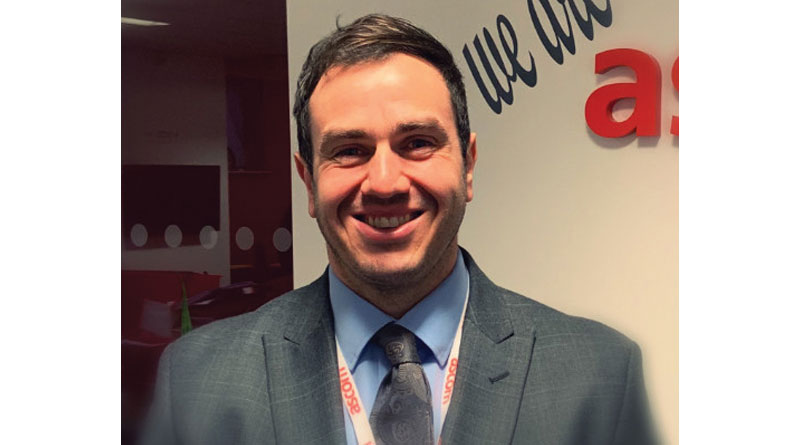The ‘Invisible’ Power Behind A New Generation of Care Homes
Stephen Cavanagh, long-term care specialist at Ascom (www.Ascom.com), explores the importance of technology that integrates seamlessly and discreetly to create a new generation of care.
In sci-fi novels and films set in the future, technology is always central. It’s overt. The design of any setting is built around it, and it’s always bright, neon lit and noisy. It’s inescapable. So, when we talk about the care home of the future, most believe that for technology to play a vital part it needs to be visible and dominating. But in reality, it needs to be the exact opposite.
Our partnership with Principle Care Homes is the perfect illustration. The group has ambitious plans for how technology will be integral for not only resident care, but also how it operates as a business when it opens its purpose-built flagship 60-bedroom care home, Heron Manor in Fleet, next Spring.
Their aim, in the words of Subhaan Iqbal, head of systems at Principle Care Homes, is to “create a new generation of care homes, where technology creates an invisible ecosystem of protection and support for our residents, their loved ones and our team. To create an environment where everyone feels special.”
Discreet data that drives informed care
The key to achieving this is discreet, near-real-time data collection via deployment of sensors, cameras, Artificial Intelligence (AI) and associated management software to unite and, essentially, turn data points into actionable insight.
Subtle changes in resident behaviour, especially where dementia is a factor – for instance getting up more regularly at night or breaking from established habitual movements throughout the day – might indicate a change in physical or mental state that needs to be investigated. But these are also changes that might easily be missed. No one care team member has a 24/7 holistic view of each resident in their care. With technology, they can.
This unlocks the ability to make improvements based on facts before there is a need for critical intervention; the ability to make informed decisions that improve care by pre-empting problems and adapting to changing needs.
Smarter monitoring that makes support less intrusive
Of course, not all changes are subtle. But that doesn’t mean the subtle use of data capture can’t deliver benefits. Take falls as an example.
Falls are a serious challenge for care home providers. In fact, according to ‘The Falls in Care Home’ study, residents are three times more likely to fall than older people living within the community.
Given the potential consequences of falls, prevention is naturally better than cure. But taking measures to ensure a resident doesn’t stumble can also be detrimental. Being monitored more closely by carers may impact on feelings of independence.
Technology tackles this issue. Residents can now be monitored through integrated technology, which records vital signs such as blood pressure, weight and hydration. Pressure sensors and acoustic monitoring installed in a resident’s living area can monitor environmental changes and track movement – providing insight into someone’s everyday life and wellbeing.
When talking about this aspect of their planning at Principle Care Homes, Subhaan told me: “We want residents to feel at home and to maintain as much of their independence as they can. Technology enables us to keep a close track of a resident’s health without it feeling intrusive. Especially when it comes to falls. By equipping ourselves with tools that enable us to pick up on subtle signals that a resident is a little unsteady on their feet, struggling to move around or get out of bed, we can act quickly.”
It’s a scenario that’s better for residents but also better for staff. As Subhaan put it, “no-one becomes a carer because of the administration and paperwork. They want to spend time supporting residents”. In other words, by continually analysing data Principle Care Homes will be able to make improvements in how their teams work. Empowering them to spend time doing the part of the job they enjoy and are highly trained for.
Interestingly, and again reflective of forward trends for future care homes, Principle Care will also be using AI-based solutions to support wider operational decision making. From simplifying HR processes and accounting, through to ordering food for residents based on their individual care plans. In fact, the ambition is for their first home to be 100 per cent paperless by the time it opens next year.
The connected future of long-term care
When you consider all these factors, it’s easy to see how tracking the real-time behaviour of care home residents could be life-changing, if not lifesaving.
What’s more, the benefits on offer can be further enhanced by making links that extend beyond care home walls. Certainly, for Principle Care Homes, the future of care is not siloed. Their aim is to integrate directly with GPs and pharmacies to “make the care pathway for residents truly connected”.
It’s exciting to see, and for Ascom to be a part of this new generation of care homes that are emerging. Technology has become such an important part of our everyday lives. To now witness it transform our health provision and the care of our loved ones, is truly inspirational.

